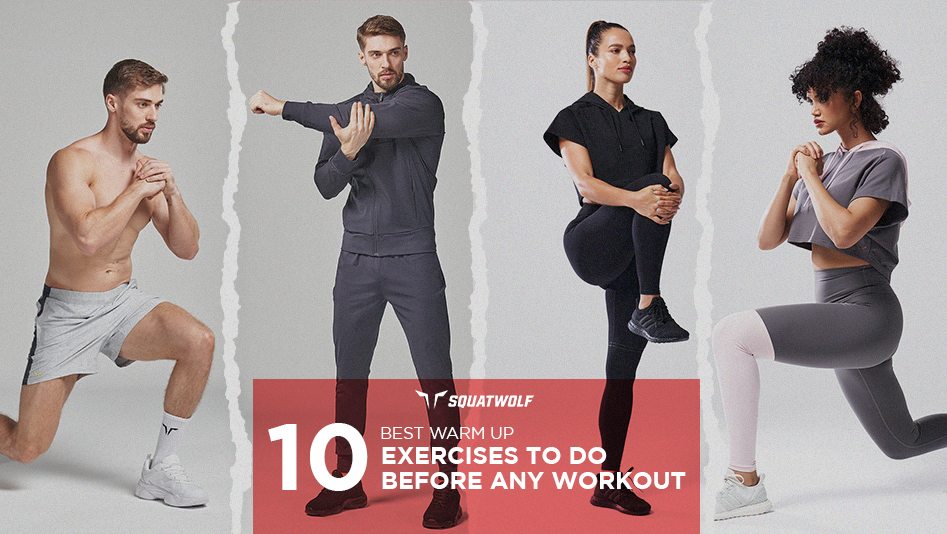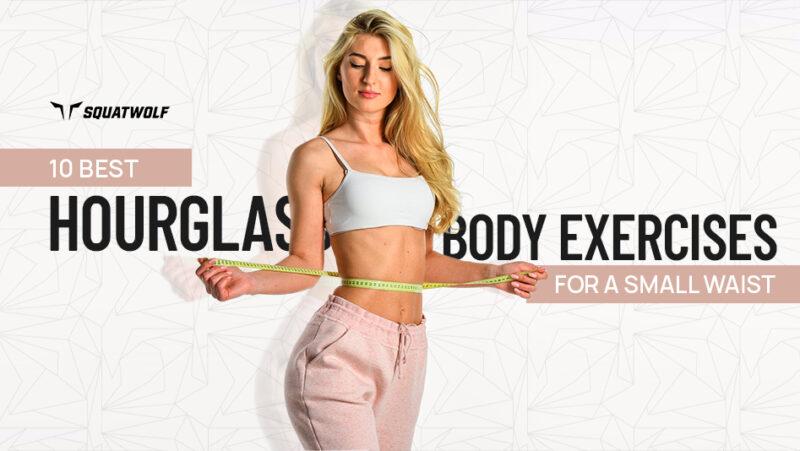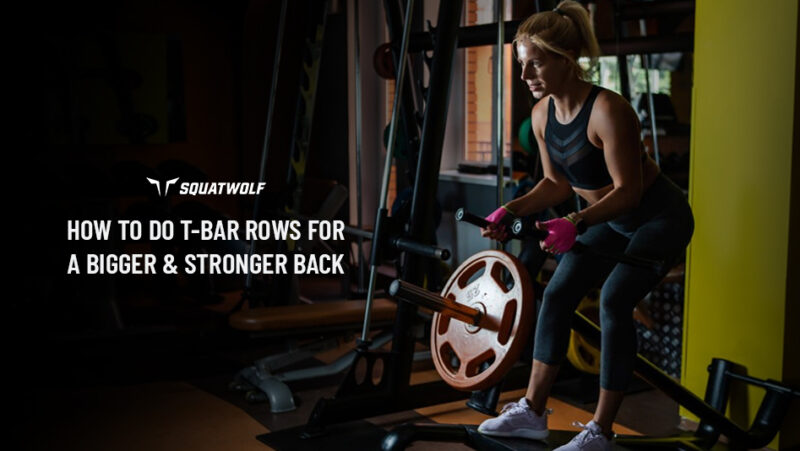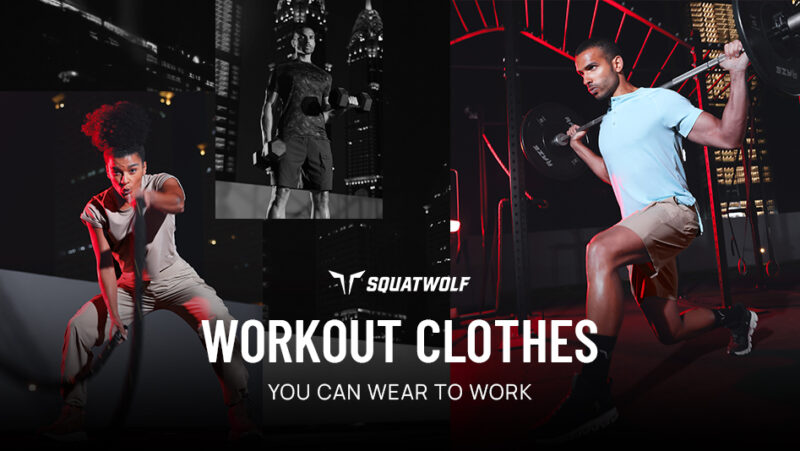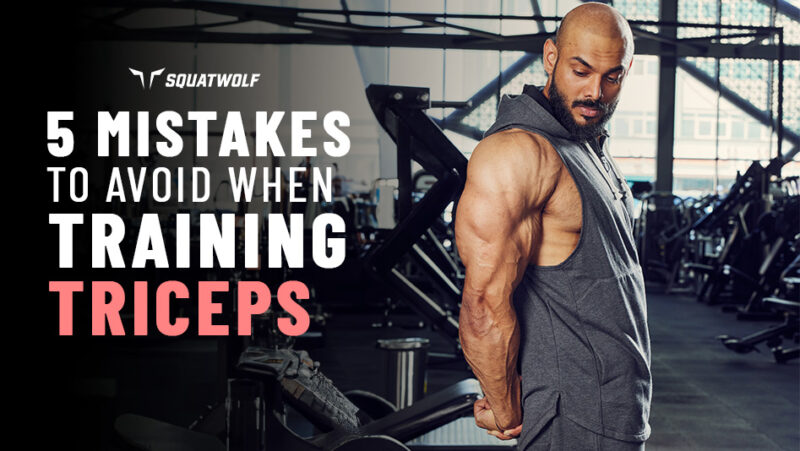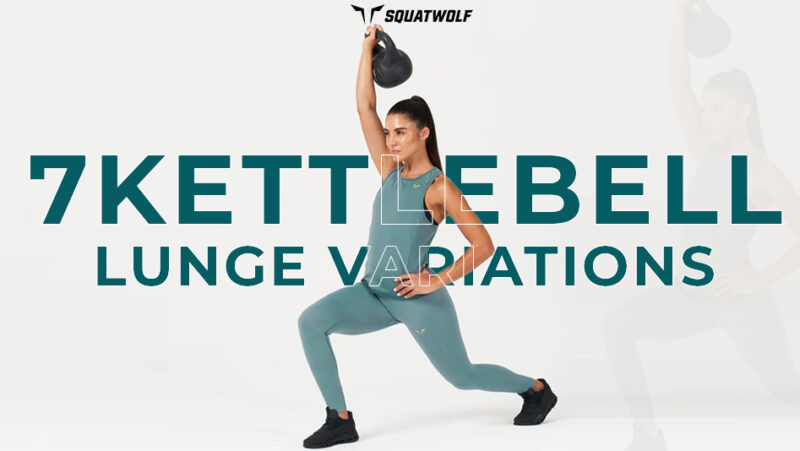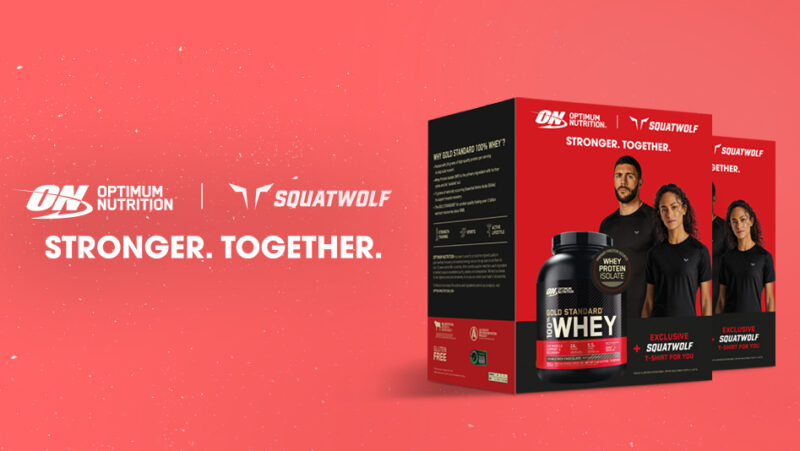Admit it, you’re guilty of jumping straight into a workout instead of activating your muscles and ended up struggling in your workout or with stiff muscles during your run. We’ve all done that. We’ve all been there. While you may be tempted to skip a warm up, its important to remember that your muscles need a ‘wake-up’ before working out to actually move and push you beyond your limits.
A warmup is to your workout what caffeine is to you early morning – crucial! But more about the importance of warm ups later. Let’s jump into the 10 best warm up exercises you need to be doing before any workout to have a real killer session!
Workout Clothes | Jumping Jacks | Jump Rope Skipping | Squats | Lunge with Upper Body Twists | Side or Lateral Lunge | Arm Circles and Crosses | Mountain Climbers | Planks | Push-Ups | Knee Hugs | Benefits | Key Takeaways | FAQs
10 Best Warm Up Exercises Pre-Workout – In a Glance
- Jumping Jacks
- Jump Rope Skipping
- Squats
- Lunge with Upper Body Twists
- Side or Lateral Lunge
- Arm Circles and Crosses
- Mountain Climbers
- Planks
- Push-Ups
- Knee Hugs
Workout Clothes
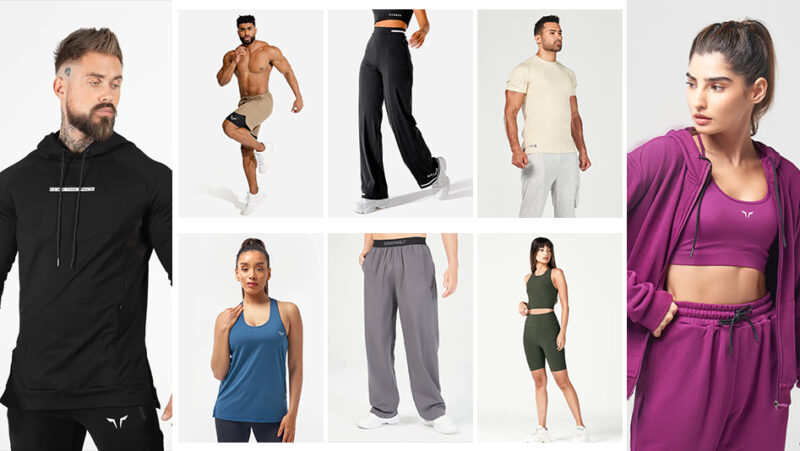
Make sure you’ve got the right gear on for your workout!
Our recommendations for women’s workout clothes include:
- Sports bra
- Tank top
- Jackets
Our recommendations for men’s gym Wear include:
- Shorts
- Hoodies
- Compression t-shirt
1. Jumping Jacks

Working several muscles at once including your hip abductors and adductors, calves, core, and shoulder abductors and adductors, jumping jacks are a fully body warm up. This exercise fires up your muscles and ramps up your heart rate, giving you that blood rush you need before a workout.
To do jumping jacks:
- Stand with your legs shoulder-width apart
- Your arms should be by your sides, fully extended
- Start by jumping – your legs will be wider than shoulder-width apart
- Push your arms above your head, aligning the movement with your legs
- Once your legs are back in shoulder-width distance and arms by your sides, you’ve completed one rep
Learn more about how to do jumping jacks properly.
2. Jump Rope Skipping
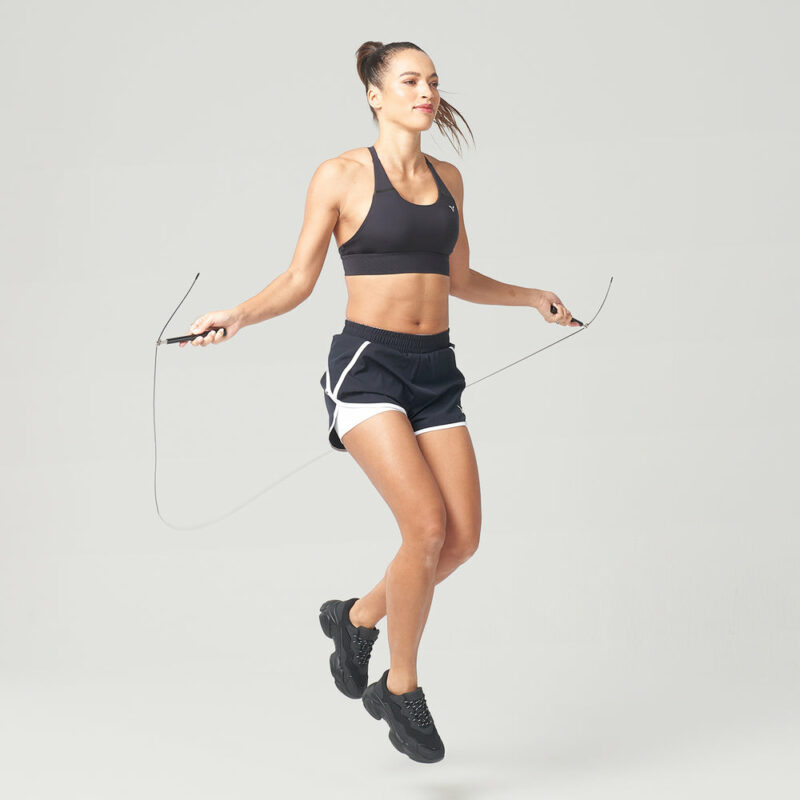
A popular warmup method among Muay Thai fighters, jump rope skipping is a mid-intensity cardio exercise that gets your blood pumping. What makes it so great is that it also engages your muscles such as your shoulders, arms, calves, legs and core, helping you build strength.
To do jump rope skipping:
- Stand with your feet together
- Hold the handles of the rope with the rope in front of you
- Start moving the rope, skipping with every step
- Do this for 3-45 seconds
Learn more about how to do jump rope skipping as a beginner.
3. Squats

Whether you’re hitting legs or back (or any other muscles group for that matter), 15-20 reps of bodyweight squats will fully activate your muscles. Squats work your hip flexors, glutes, core, quads, hammies and calves, along with stabilizing muscles, charging you up for an intense workout session.
To do squats:
- Stand with your feet shoulder-width apart for a traditional, bodyweight squat
- Place your hands on your sides or in a cross on your chest – whatever you’re comfortable with
- Brace and tighten your core
- Slightly hinge your hips backward with a bend in your knees
- Lower your hips until they’re parallel to the ground or as low as you can go
- With your heels, push yourself back up so you’re standing straight to complete one rep
Level up your workout game with resistance band squats.
4. Lunge with Upper Body Twists

A dynamic exercise, the lunge with upper body twists works your lower as well as upper body. Not only is this great for pre-workout, it also helps you loosen up stiff muscles, especially if work a desk job. Apart from working your flexors and stabilizing muscles, it strengthens your core and improves your body’s muscle coordination.
To do lunges with upper body twists:
- Stand with your feet hip-width apart and hands on your sides
- With your working leg, take a step forward and descend into a lunge, working your glutes
- Keep your hands on your chest and while maintaining the lunge, twist your upper body to the opposite side
- Repeat with your other leg to complete one rep
Try some anterior pelvic exercises to improve your ability and body posture.
5. Side or Lateral Lunge

Although part of many people’s leg workouts, bodyweight side or lateral lunges are not just exercises to build muscles but also to stretch them out. This exercise targets your inner and outer thighs, while helping you loosen up your hip flexors. It also builds strength, helping you do dumbbell leg workouts easily.
To do side or lateral lunges:
- Stand with your feet hip-width apart
- Hold your arms in a fit above your chest or on your sides
- Brace your core and hinge your hips to prepare for the movement
- With your working leg, take a big step sidewards and lower down into a squat
- Switch to the other leg to complete one rep
Learn how to do lateral lunges to build your flexibility and mobility.
6. Arm Circles and Crosses
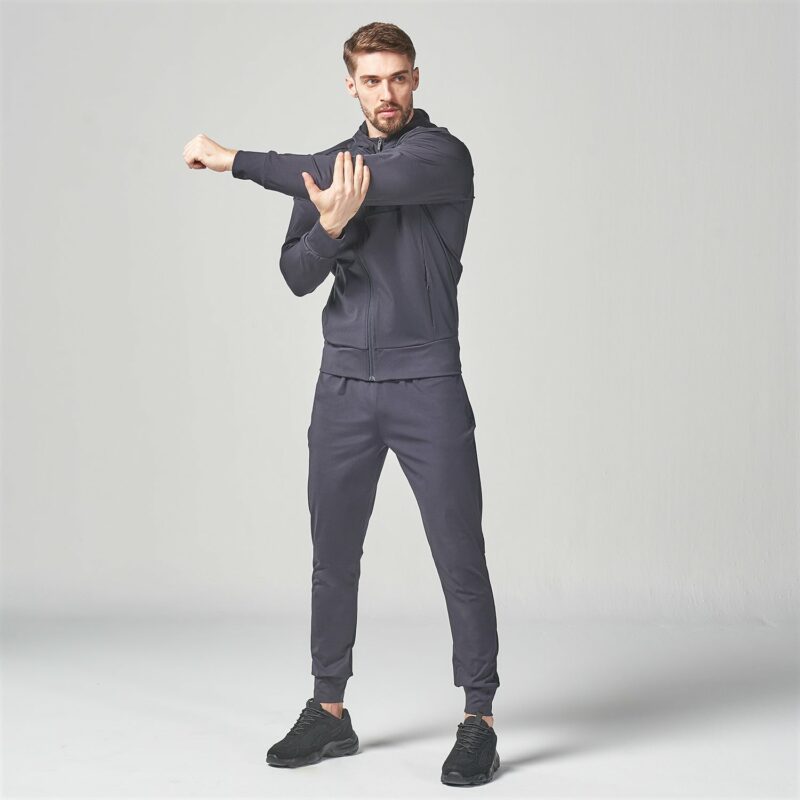
A complete arm movement, arm circles and crosses help you improve your upper body mobility. From gentle circling motion opening up your tight muscles to cross stretching creating flexibility, this exercise helps you release tension. And, it prepares you for the workout you’re about to have – especially if you’re doing upper body workouts.
To do arm circles and crosses:
- Stretch out your arms horizontally by your sides
- Make sure your arms are fully extended
- Using your shoulders, start moving your arms in full circles to work your rotator cuffs
- Then move onto arm crosses, by bringing your fully extended arm to your opposite side
- Place your non-working arm under your working arm and press it into your chest
Try these 6 arm workouts to build strong arms.
7. Mountain Climbers

Imitating the movement of climbing a hill or steep landscape, mountain climbers are a cardio-core exercise that get you sweating. This exercise engages your arms, core, glutes, quads and stabilizing muscles all at once.
To do mountain climbers:
- Start as if you’re doing a plank with your palms flat on the ground
- Make sure your core is braced and tightened to keep it fully engaged
- Bring your working leg’s knee into your chest
- Switch to the other leg and repeat the motion
- You need to do this exercise in speed, continuously for 30-45 seconds
For a complete core workout, try these 6 lower ab exercises.
8. Planks
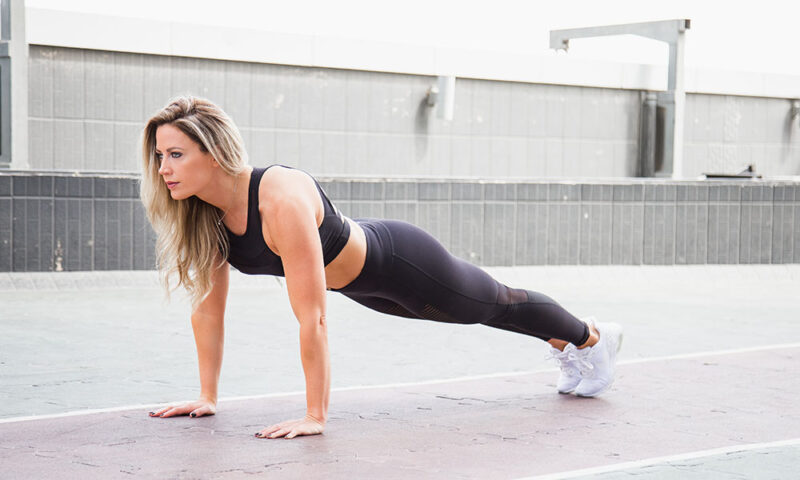
Part of the isometric core workouts, planks are an amazing exercise to improve your body’s stability and posture. They target your core, legs, shoulders, back and even chest.
To do planks:
- Extend your arms fully onto the mat and get into the plank position
- Ground your toes into the floor for lower body stability
- Keep your core tucked in so it is fully engaged
- Make sure you squeeze your glutes and quads to support your lower body
Blaze up your core with this 10 minute plank workout.
9. Push-Ups
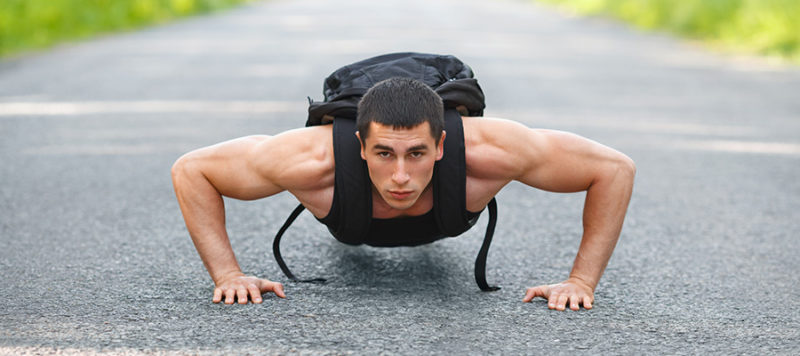
Building strength, stability and mass, push-ups are the perfect exercise to sculpt your chest and improve your core power. This powerhouse move also works your shoulders, arms and legs, helping you feel completely fired up for your workout.
To do push-ups:
- Get in the plank position
- Make sure your arms are aligned with your chest
- With your elbows tucked into your sides, lower your body until its parallel to the ground
- Squeezing your pecs, lift yourself up
Learn a different variation of the traditional push-ups – diamond push-ups.
10. Knee Hugs

If you’re about to hit a low impact workout session or go for a light jog, then knee hugs are the perfect way to loosen up your stiff muscles. This gentle stretch helps you get flexibility in your legs, glutes and hip flexors. This is also a great exercise if you’re tired of sitting for too long.
To do knee hugs:
- Stand with your legs fully extended
- Stretch your hands out and gently push your knee up
- Grab your knee with both your hands and pull them into your torso
- Repeat with the other leg and do this 20-30 times for each leg
Get stronger joints with these 4 knee exercises.
3 Benefits of Doing Warm Ups
Warmups prime your body for the actual workout. Not only do they activate your sleeping muscles, they also get your blood pumping and air flowing, pushing you to power through your workouts. In addition, they loosen up stiff and numbed joints, helping you amp up your agility for boosted performance.
Here are some more benefits of doing warm-ups before your workouts:
They Prevent Injuries
If you workout on cold or stiff muscles, you’re going to end up shocking the muscle that wasn’t ready. This means your muscles are likely to strain or tear up, which leads to muscular injuries post-workout. This is why, whether you’re about to play sports, go for a run or lift weights, you need to do your warm-ups. For instance, a tennis player will do some dynamic ankle and knee stretches to avoid straining or pulling their muscles during the sports.
Learn more about back muscles to do your exercises correctly and stay injury-free.
They Improve Your Range of Motion
Without a full range of motion, none of your exercises will be effective. This is because your range of motion determines the extension and contraction of your muscles during an exercise. If this is compromise or you’re doing half reps, you’re not fully working the right muscles. Here comes your warmups – they build flexibility in your body, which helps you achieve a full range of motion during your workouts.
Incorporate some Yoga stretches in your pre or post-workout routine to build flexibility.
They Ease You into the Workout
If you hop right into an intense workout, you might end up shocking your entire nervous system. This could also lead to some serious physical injuries. However, a warmup routine helps you ease into your intense sessions, transitioning from those cold and stiff muscles to becoming charged, ready to hit the toughest of sessions. For instance, you never see runners sprint right away – they always start off with a light walk or jog. This gets their heart rate up slowly, allowing them to run at a steady pace to cover longer distances.
Try these 5 cool down exercises post-workout to boost your recovery.
With warmups, you’re mentally prepared for the physical activity you’re about to engage in. This improves your reaction speed during workouts, helping you execute your moves in the right way!
Key Takeaways
The way a guitarist sets the stage for a rockstar, a warmup sets the foundation for your workout. A proper warmup is all the difference between a workout and a great workout session. By incorporating a proper warmup routine, you’re not just preventing injuries – you’re also prepping your body for an intense session ahead. If you really want to unlock your full potential and push beyond all limits, make sure you hit those warmup exercises!
FAQs
The first type of warmup is a general warmup such as cycling or walking to get your heart rate up and get your body moving. The second type of a warmup includes static stretches such as basic Yoga poses, paused lunges or toe touches that are slow and focused to help you loosen up your stiff muscles. The third type of a warmup is the sports-specific warmup which includes movements that are activity specific such as dribbling for basketball or footwork for boxing. And lastly, the fourth type of warmup includes dynamic stretches that leg swings, arm circles, butt kicks, torso twists, and more.
An effective warmup includes a combination of general aerobics, slow or static stretches and dynamic stretches that not only loosen up stiff muscles but also wakes up your cold muscles for a hearty workout. With a proper warmup, your body temperatures are likely to rise and your joints will get into movement, giving you the flexibility, you need for a full range of motion during your workout.
Start with a 5-10 minute of basic cardio such as jumping jacks, cycling, walking or brisk walking. Once your heart rate is up, dive into some mobility training with leg swings, walking lunges, lateral lunges, arm circles and toe touches. You can also go for dribbling or swinging a bat if you’re about to play any sports – this will get the right muscles activated.
The best warmup activity is the one that not only gets your blood pumping and heart rate up, but also the one that ensures your tight muscles have some stretchability in them. Some of the best warmup activities include light jumping or jogging, shoulder shrugs, arm circles, walking lunges, marching with arm swings, side-to-side and forward leg swings, mountain climbers, jumping squats. You can also incorporate some sports-related movements such as rackets swinging, dribbling, balling depending on the type of sports activity you’re about to do.
The 10 main benefits of warmups include:
- Improved overall flexibility
- Better blood flow throughout your body
- Improved oxygen supply throughout your muscles
- Ramped up heart rate for cardiovascular health
- Better joint mobility
- Easy transition into your workout
- Wakes up your cold muscles for engagement during your workout
- Improved mind-muscle connection
- Low risk of injuries
- Hormonal stimulation pre-workout
Combined, all these factors make a warmup absolutely crucial for a seamless workout and overall health.
Continue Reading

